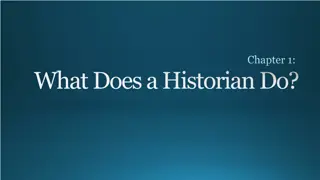Changes and Continuities in Byzantium: 600-1450 CE
Byzantium, as a continuation of the Roman Empire, experienced political, economic, religious, social, and interactive transformations over time. From Caesaropapism to Arab invasions, the empire witnessed shifts in power dynamics, economic activities, religious practices, social structures, and interactions with neighboring regions, while also maintaining certain core elements. These changes and continuities shaped the evolution of Byzantium from 600 to 1450 CE.
Download Presentation

Please find below an Image/Link to download the presentation.
The content on the website is provided AS IS for your information and personal use only. It may not be sold, licensed, or shared on other websites without obtaining consent from the author. Download presentation by click this link. If you encounter any issues during the download, it is possible that the publisher has removed the file from their server.
E N D
Presentation Transcript
CHANGE OVER TIME- BYZANTIUM 600-1450 CE Monica Johnson
BASIC BEGINNING FEATURES 600 CE Byzantium is continuation of Roman Empire Not long after Justinian s reign Justinian s Laws have taken effect and will be influential for a millennium
POLITICAL Change or Continuity? Event Year Analysis Continuity Caesaropapism Duration of empire Leaders wanted to keep control and represent the church in gov t, usually were adherents to the religion Continuity Emperor at head Duration As an extension of Roman Empire, kept that tradition Change Arabs taking territory 630 Inspired by Islamic jihad, Arabs took Egypt, Palestine, Mesopotamia
ECONOMIC Change or Continuity? Event Year Analysis Continuity Agricultural Economy Duration Prior to industrialization, fertile area After 6thcentury Change Smuggling of silk Wanted a part of lucrative silk trade, prior it was monopolized by Chinese Change Plight of free peasantry Wealthy began to consolidate lands into their hands
RELIGION Change or Continuity? Event Year Analysis Change Great Schism 1054 Split from Roman Catholicism, different customs from the west Continuity Christianity Duration Kept basic beliefs/structure of Christianity Change Different customs Started to move away from traditional RC, eg beards and marriage
SOCIAL Change or Continuity? Event Year Analysis Continuity Aristocratic living Duration Byzantine opulence allowed for elaborate homes and luxurious lifestyles Continuity Public entertainment Duration In keeping with the Romans, Byzantine life included horse races, theaters, etc Change Peasant life As mentioned, as the rich began to take more land, life became harder for peasants, lowering the standard of living
INTERACTIONS Change or Continuity? Event Year Analysis Continuity Kept ties with west Duration Customs and encounters between the two empires were a fixture Continuity Mediterranean domination Duration Byzantine empire exerted influence on many European/Mediterranea n people due to proximity and trade Change Arab encounters 630 As Arabs invaded and took lands, culture spread
ARTS & SCIENCES Change or Continuity? Event Year Analysis Continuity High literacy rate Duration Affluence and need for educated workers created state-sponsored schools Continuity Use of icons Duration Unlike some other religions, the Byzantines/Eastern Orthodox Christians used icons extensively Change Icon controversy ~720 Leo III caused a century- long controversy, thought that icons themselves were being worshipped
NEAR: GEOGRAPHY Change or Continuity? Event Year Analysis Continuity Headed from Constantinople Duration Constantine made the city the capital near the end of the western Roman empire s prevalence and it stuck Continuity Peninsula, access to the Eastern world Duration Allowed for Byzantine dominance, important areas could be easily reached Change Lands seized by Arabs 630 Arabs took control of certain important lands, weakening the empire
BASIC ENDING FEATURES Crusades nearly destroyed Constantinople, leaving the empire fragile Plight of free peasantry lowered tax revenue and pool of military recruits Invasions from Saljuqs Turks took Constantinople in 1453, ending the empire























